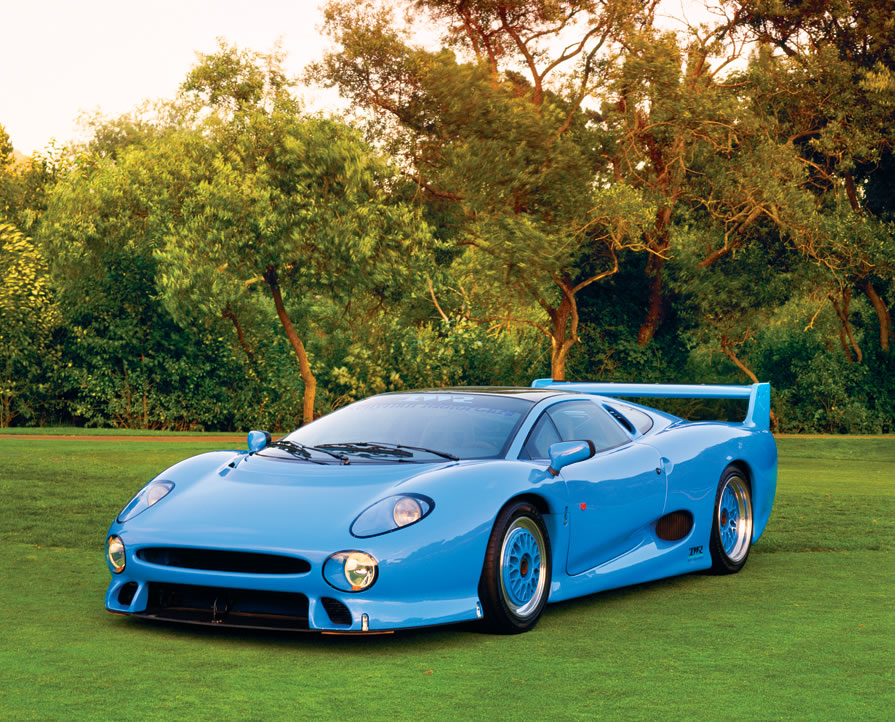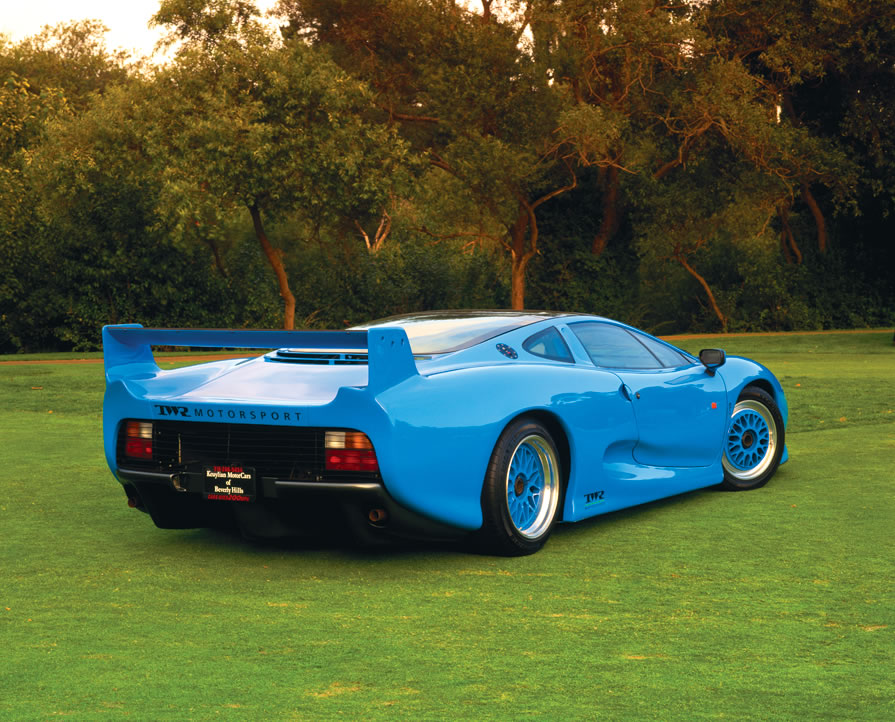1994 Jaguar XJ220 TWR
The Jaguar XJ220 fashioned the V12 powered, four-wheel drive concept into a twin-turbo V6-powered, two-wheel drive production. Instead of a big V12 engine, it has a turbocharged V6 — visible through the rear window —to improve weight and distribution. It can reach over 200 mph, going from 0 to 60 mph in 3.6 seconds.
In spite of the smaller displacement, the engine produced more power than the V12 and improved handling by being set lower and more centrally in the car. The defining characteristic of the engine was its immense torque relative to its overall capacity and peak power. Another benefit of the engine was its superb fuel economy; the “fastest car in the world” also managed to return up to 32 MPG — a figure that most contemporary saloon cars would not be able to match. It was also the first Jaguar engine to use forced induction.
The chassis was developed using aluminum honeycomb construction, which offers immense strength and very light weight. It is lighter than the Lamborghini Diablo, Ferrari 512TR, and even the Bugatti EB110GT.
TWR also revised the body design and installed conventional doors. Body panels were handcrafted from aircraft-grade aluminum by Abbey Panels of Coventry. The XJ220 was the first road car to exploit under-body airflow and venturi to generate downforce in excess of 3,000 lbs. for high-speed stability. Theoretically, the car could be driven upside down at high speed. It used a Group C suspension configuration for precise handling.
The first XJ220 rolled out in 1992 with a price tag of $846,000.
- Wheelbase, inches: 103.9
- Weight, lbs: 3,241
- Length, inches: 194.1
- Width, inches: 87.4
- Height, inches: 45.3
- Production: 281
- Base price: $846,000
- Type: Cosworth-designed, TWR-developed, Twin turbo 90 degree, V6 quad cam
- Displacement: 3498 cc / 213.5 in³
- Fuel system: Zytek electronic sequental fuel injection with twin Garrett T3 turbochargers
- Engine: 3498cc quad-cam V6 with twin Garrett T3 turbos
- Compression ratio: 8.3:1
- Horsepower @ rpm: 542 hp @ 7,000 rpm
- Suspension: Front and Rear Suspension
- Torque @ rpm: 475 lb ft @ 4,500 rpm
- Transmission: Five-speed manual transaxle
- Top Speed, mph: 217 mph
- 0-60 mph, sec: 3.6 seconds
- 1/4 mile, sec @ mph: 11.7 seconds
Powered By

All Photos: © Kimball Stock

